Inside NYC's Chaotic Timothée Chalamet Lookalike Competition
When flyers for a Timothée Chalamet Lookalike Competition began circulating across New York, cinephiles didn't expect the event


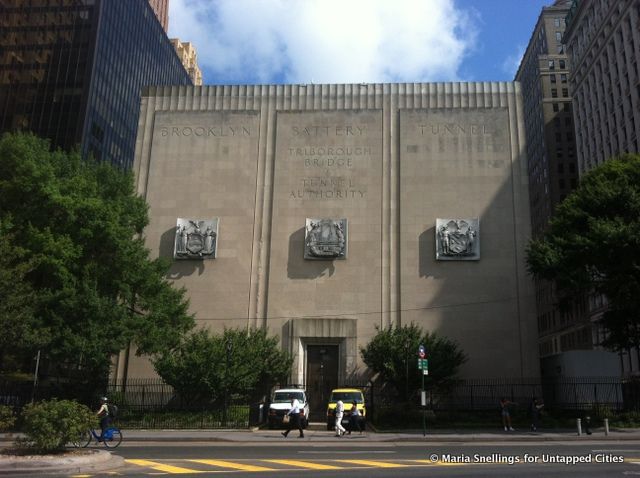
The Brooklyn-Battery Tunnel connecting Brooklyn’s Red Hook to Manhattan’s Battery Park opened on May 25, 1950. Upon its construction, it has been featured in popular movies, served an integral purpose in one of the city’s most dark days, and was even the cause of some destruction itself. This New York City tunnel has been a part of many historic moments, leaving with it some secrets. Here are our top 10 secrets of the Brooklyn-Battery Tunnel.
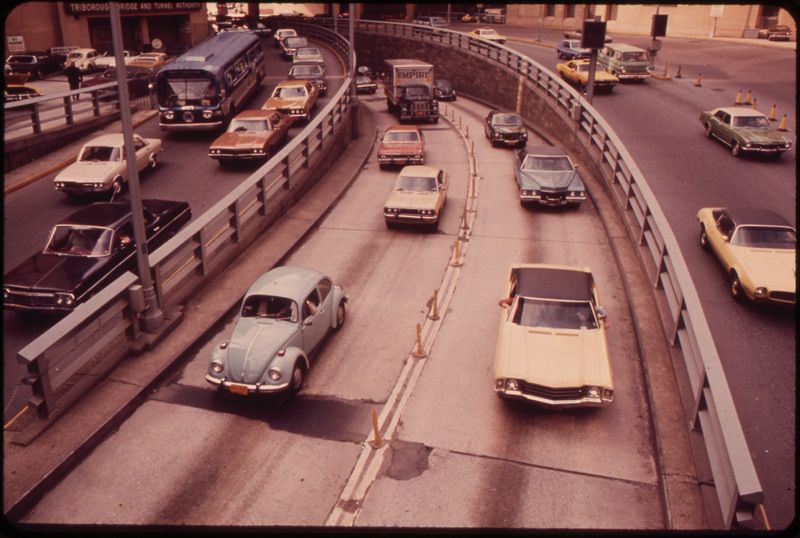
Manhattan side of the Brooklyn-Battery Tunnel, May 1973. Image via Wikimedia Commons
In the 1950s when the Brooklyn-Battery Tunnel was first opened, it was the single longest underwater tunnel the world had ever seen. Measuring at a whopping 1.7 miles and containing tubes 31 feet in diameter, the tunnel was designed by the Chief Engineer of New York City at the time, Ole Singstad. The project was ambitious, even by today’s standards, and it accordingly took almost a decade to complete.
Unfortunately, the Brooklyn-Battery Tunnel’s title has since been usurped. In 2016, the Gotthard Base Tunnel was opened in Switzerland. Its 35.5 miles of road dwarfed the mere 1.7 miles of the Brooklyn-Battery Tunnel. But we New Yorkers can still brag about having the longest underwater tunnel in North America.
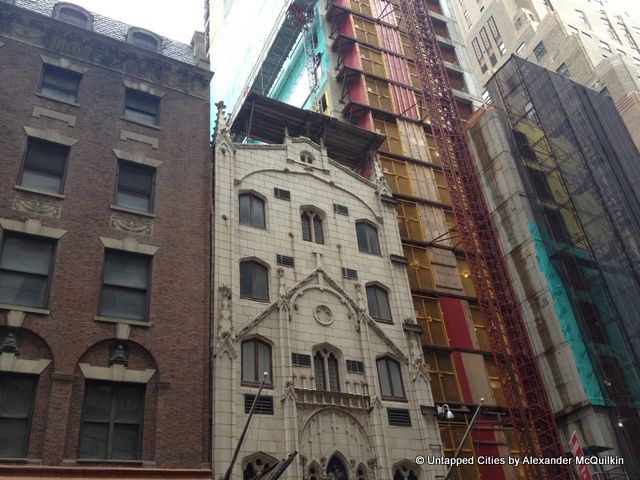
Before the construction of the Brooklyn-Battery Tunnel, the area that its Manhattan entrance occupies was a neighborhood called “Little Syria.” The title might not have been so accurate, as immigrants from over 27 different countries called it home. Diverse though they were, these inhabitants did share one thing in common – the Arabic language.
When the city decided to construct the tunnel, they invoked eminent domain and forced residents to relocate with just several days notice. The neighborhood was razed and now only a few remnants remain, like the St. George Syrian Melkite Catholic Church.
 Agents walk out of the Brooklyn-Battery Tunnel Ventilator Building, which was filmed in 1997 as the Men in Black Headquarters.
Agents walk out of the Brooklyn-Battery Tunnel Ventilator Building, which was filmed in 1997 as the Men in Black Headquarters.
In the 1997 film Men in Black, starring Will Smith and Tommy Lee Jones, the “Ellis Island” of intergalactic alien immigration is housed in one of the four ventilation buildings that consistently pump and redistribute air throughout the Brooklyn-Battery Tunnel.
You may remember Will Smith walking into a building with huge fans on his way down to the headquarters. Turns out those fans actually had a purpose beyond looking cool – making sure you don’t suffocate when you’re commuting from Brooklyn. Unfortunately, the building probably doesn’t house a secret government organization (at least to our knowledge).
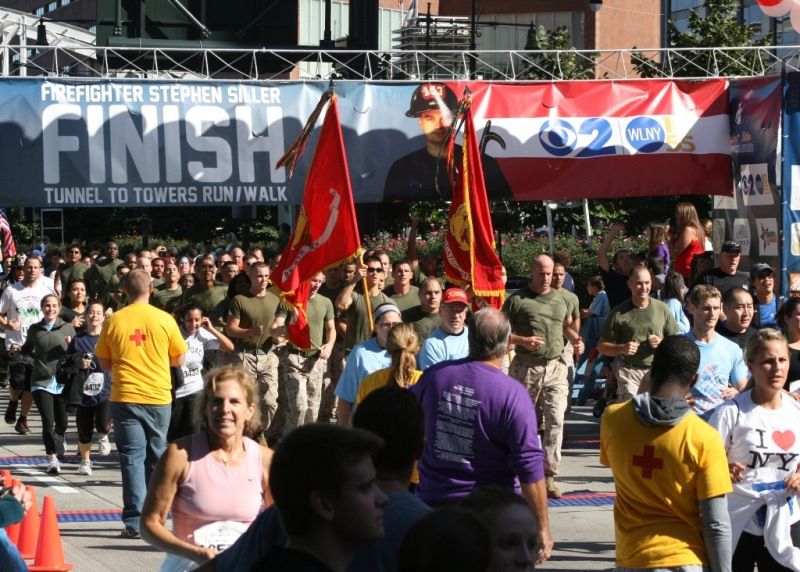
Tunnel Tower Run. Photo by Tech Sgt. Jennifer Lindsey via the US Marine Corps
During the 9/11 attacks, the Brooklyn-Battery Tunnel provided an absolutely necessary service by allowing the FDNY to receive help from their Brooklyn divisions. One particularly brave firefighter strapped all of his gear to his body and took off running, making it from Brooklyn to the World Trade Center via the tunnel. The man’s name was Stephen Siller and he gave his life to help those in need during the attack.
Now, every year, Siller and every other courageous firefighter who died on 9/11 is commemorated by the “Tunnel to Tower Run,” a 5k race that makes its way through the Brooklyn-Battery Tunnel to One World Trade Center.
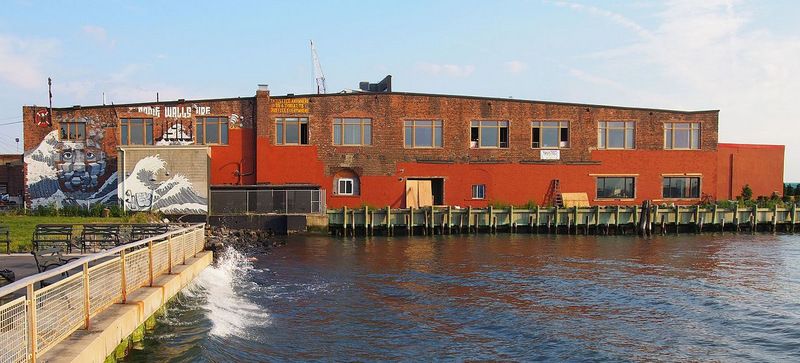
Van Dyke Street Red Hook, Brooklyn. Image via Wikimedia Commons
By the time construction began on the Brooklyn-Battery Tunnel, the neighborhood of Red Hook was already facing some serious economic difficulties. The main industry of the neighborhood, the manual labor of unloading and processing cargo, had increasingly been facilitated by machines, and so had reduced the need for physical bodies drastically. The industry had also largely been moved to larger plants in New Jersey that could afford the new equipment.
With the construction of the tunnel, Red Hook became physically separated from the rest of the borough, leading to a drastic rise in economic strife and crime. The neighborhood quickly became a mafia hotbed and the shadow of this criminal empire has long hung over the area. It has only been in recent years, with the increase of tech entrepreneurs, manufacturing companies, and public transit options like the NYC Ferry, that the neighborhood has been able to get back on its feet.

The Brooklyn Battery Tunnel Ventilation Building.
Despite the tunnel’s immense size, it is never in want of clean air. It’s not that hard to imagine an underground tunnel filled with cars being completely saturated with exhaust fumes, but thanks to the design by Ole Singstad, the tunnel is constantly sucking fumes out and bringing in fresh air from the surface. This is all because of the four ventilation chambers in Manhattan, Brooklyn, and Governors Island that are so powerful that they can completely replenish the entire tunnel with fresh air every 90 seconds.
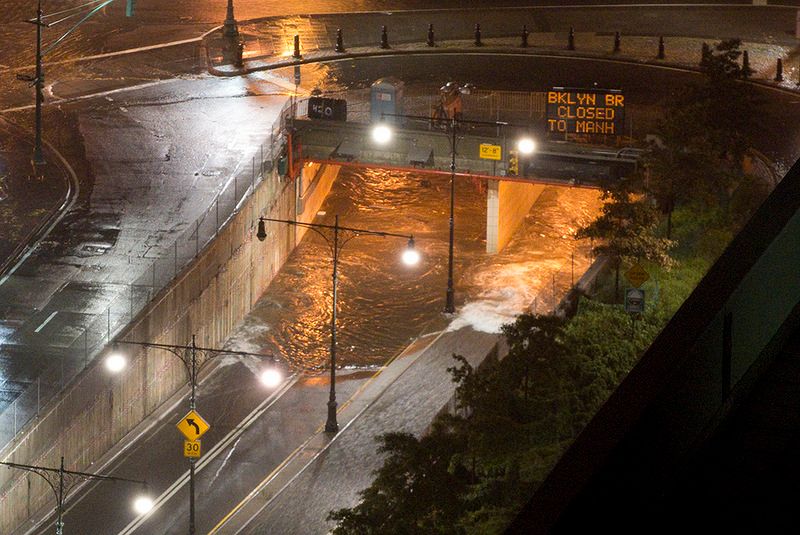
Sandy West St underpass flooding. Photo courtesy of Jay Fine for the MTA via Flickr Creative Commons
In the days leading up to Hurricane Sandy, the city of New York decided to err on the side of caution and close down the tunnel. It was a good thing they did. When the storm reached the city, it completely battered the tunnel, filling it to the brim with 86 million gallons of dark, murky water.
It took two weeks for the water to be pumped out. The city reworked the ventilation chambers to circulate the water up and out of the tunnel and, despite the incredible amount of water, were able to bring almost 10,000 gallons out every minute. The city reopened the tunnel two weeks later without a hitch.
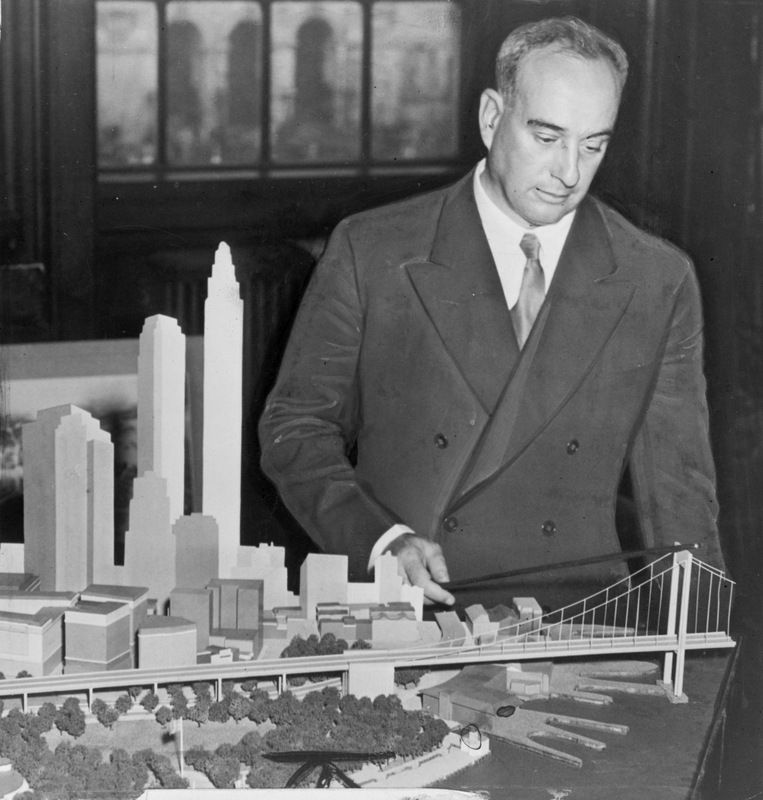
Robert Moses with Battery Bridge model. Image via Wikimedia Commons
Robert Moses, the preeminent city planner of New York during the time of the tunnel’s construction, absolutely abhorred the idea of the tunnel. Despite the fact that a bridge would drastically reduce the size of Battery Park (destroying even more area than the neighborhoods the tunnel would already demolish), Moses was adamant that a bridge was the only option.
The general public thought it would be an eyesore on the Manhattan skyline and were displeased with the idea of devoting such a large area of Manhattan to a bridge entrance instead of a livable, walkable, area. Despite all this, Moses refused to budge until President Franklin D. Roosevelt stepped in and told him a tunnel was the only option.
Moses begrudgingly listened, although he demanded the walls be changed to fit his preferred, “safer” finishing on the walls. This finishing lead to massive leakage that was only fixed when the city reverted back to Singstad’s plan (the one Moses insisted on replacing), and one that still works perfectly to this day.
During World War II, America was in desperate need of the steel and simply could not spare any resources for the construction of the tunnel. All the supplies were going to munitions and aircrafts. It seemed public transport was the least of our concerns.
This lead to the complete abandonment of the tunnel’s construction for several years. It was only after the completion of the war in 1945 that construction of the tunnel began again, finally opening its doors to the public in 1950.
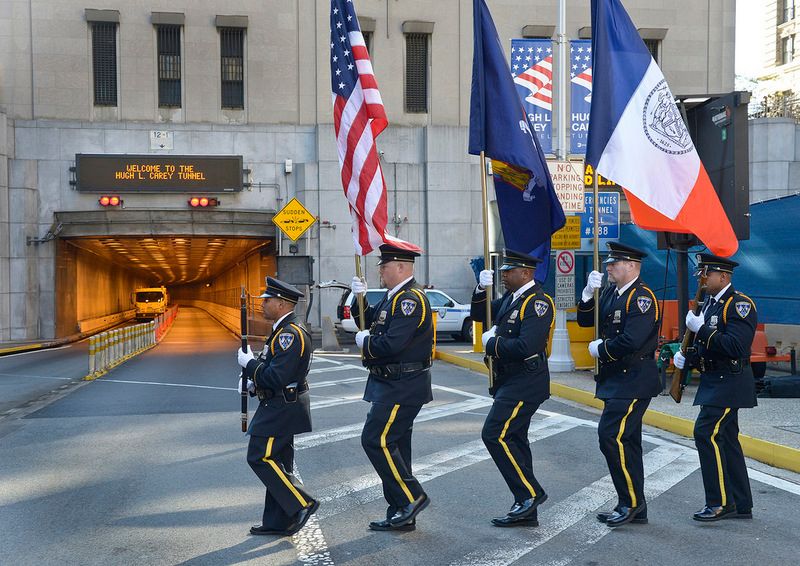
Renaming ceremony of the Brooklyn-Battery Tunnel in 2012. Photo by the Metropolitan Transportation Authority / Patrick Cashin via Flickr Creative Commons
While most people still call the Brooklyn-Battery Tunnel by its original name, it was recently renamed the Hugh L. Carey Tunnel to honor the 51st Governor of New York in a ceremony on October 22, 2012. The above ceremony was attended with much fanfare and included guests such as New York State Lieutenant Governor Robert J. Duffy, Mayor Bloomberg, former Governor Mario Cuomo, MTA Chairman and CEO Joseph J. Lhota, and members of the Carey family.
As with many structures in this city, the original name tends to stick. So while driving you should be looking for signs for the Hugh L. Carey Tunnel, but most often it will still be referred to as the Brooklyn-Battery Tunnel.
Next, check out 7 Secret NYC Tunnels You Probably Haven’t Heard Of and The Top 10 Secrets of the Holland Tunnel Connecting NYC and New Jersey.
Subscribe to our newsletter